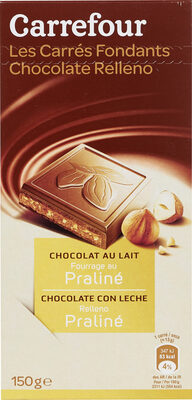COEUR au Praliné CHOCOLAT au LAIT - Carrefour - 150 g
Aquesta pàgina del producte no està completa. Podeu ajudar a completar-la editant-la i afegint-hi més dades a partir de les fotos ja disponibles, o fent-ne més amb l'aplicació de androide o iPhone / iPad. Gràcies!
×
Algunes de les dades d’aquest producte les ha proporcionat directament el fabricant Carrefour.
Codi de barres: 3245412305122 (EAN / EAN-13)
Nom comú: Chocolat supérieur au lait fourrage (45,6 %) au praliné et aux éclats de noisettes caramélisés.
Quantitat: 150 g
Marques: Carrefour
Categories: Snacks, Aperitius dolços, Cacau i derivats, Xocolata, Xocolata amb llet, en:Filled chocolates, en:Chocolate filled with praline, en:Filled milk chocolates
Etiquetes, certificacions, premis:
Punt verd, Fet a França
Productor: Fabriqué en France par EMB 59094 pour Interdis.
Codi de traçabilitat: EMB 59094 - Bourbourg (Nord, France)
Botigues: Carrefour
Països on es va vendre: Itàlia, Espanya, fr:Francia
Matching with your preferences
Entorn
Petjada de carboni
Empaquetament
Transport
Espècies amenaçades
Altres dades
Condicions de conservació: A conserver à l'abri de l'humidité, de la chaleur (entre 18°C et 20°C) et d'odeurs parasites. Pour une dégustation optimale, à consommer de préférence avant fin / N° de lot : voir ci-dessous.
Servei al client: Interdis - TSA 91431 - 91343 MASSY Cedex - France
Report a problem
Fonts de dades
Producte afegit per kiliweb
Última modificació de la pàgina del producte per lorsitog.
La pàgina del producte, també editada per aleene, autorotate-bot, billy1662, carrefour, desan, ecoscore-impact-estimator, hungergames, openfoodfacts-contributors, org-carrefour, roboto-app, teolemon, thaialagata.










